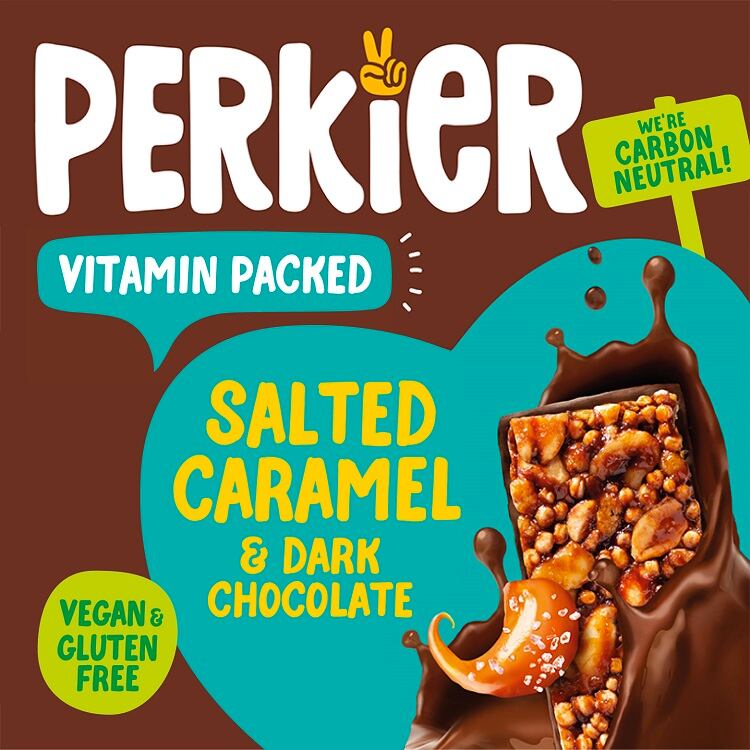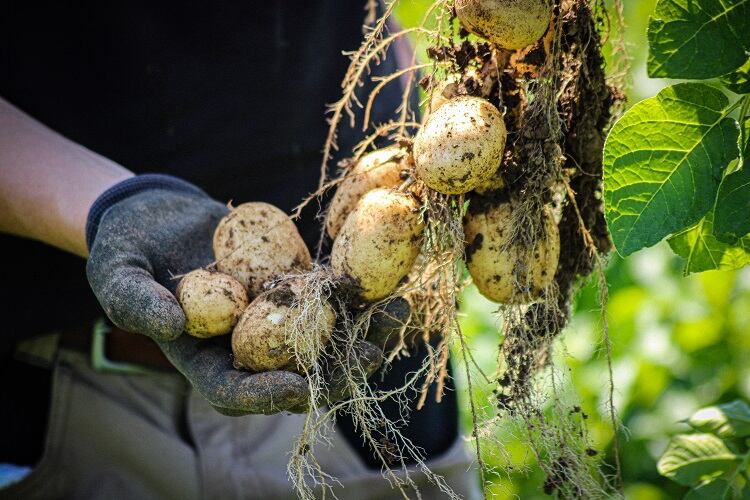After a doctor ordered Ann Perkins to completely cut gluten and dairy from her diet, she quickly became disillusioned by the snacks available to her.
Not only were they not meeting her dietary needs, but they also weren’t caring for the planet, she recalled at a recent event co-hosted by Perkier and ClimatePartner.
Perkier, which Perkins co-founded with Steve Turner (the brand name comes from a mashup of their surnames), is now on a mission to make the ‘healthiest snacks on the planet’, without ‘messing up the planet’.
As part of that commitment, Perkier has partnered with environmental consultancy ClimatePartner to achieve climate neutral certification.
From cradle-to-grave, FoodNavigator hears about Perkier’s product carbon footprints, the company’s sustainability credentials, and how the snacks brand is offsetting 501 tonnes of CO2e.
Quick wins in cutting emissions
The path to climate neutrality is an important one. If we continue to emit greenhouse gases (GHGs) at the same rate as we are currently, averting global warming will be impossible.
“When it comes to GHGs, we need to release less and remove more,” explained ClimatePartner commercial sustainability manager Tom Sadan.
“Even if we were to stop emitting everything today, there is still too much GHG in our atmosphere for controllable global warming. At the same time as reducing GHG emissions, we need to me removing what has already been emitted.”
A ‘holistic’ climate action strategy, according to ClimatePartner, consists of five steps: measuring corporate carbon footprint, measuring product carbon footprints, reduction, offsetting, and communicating.
Perkier has already implemented ‘quick wins’ to keep down its emissions, we were told. Examples include using recyclable packaging, not using any air freight, being plant-based, and limiting food waste.
At Perkier HQ, team travel is low and many staff either walk or take public transport to work. A sensor light has been implemented in the office to reduce energy use.
“A lot of ‘quick wins’ for some companies with a high footprint aren’t necessarily applicable to Perkier,” explained Sadan, suggesting that Perkier already adheres to many sustainable practices.
“The key areas will now be around raw material and packaging, and this is something Perkier is tackling now, for mid-term implementation.”
What is the CO2 footprint of a Perkier bar?
Measuring a product’s carbon footprint covers all relevant emissions during the product’s lifecycle. This includes all emissions associated with raw materials, logistics, production, usage, and end-of-life.
The average CO2e per Perkier bar stands at 128g. At the press event, ClimatePartner offered a breakdown of one of the brand’s products: Perkier’s Cranberry & Goji bar.
Unsurprisingly, the largest amount of emissions (77.1%) are associated with materials acquisition and pre-processing. Non-attributable processes, which accounts for everything that can’t be strictly measured (such as emissions associated with a consumer driving to the supermarket to purchase a Perkier bar), stands at 14.5%.
Production is associated with 4.7% of the product’s emissions, distribution and storage accounts for 3%, and end-of-life just 0.6%. “If Perkier’s packaging wasn’t recyclable, this would be higher,” said ClimatePartner’s Sadan. “If the product shelf-life was lower, this would also be higher due to food waste assumptions.”
The lowest emissions are associated with the product’s usage phase, which for Perkier’s bars is ‘almost negligible’. “This is the phase when it is in the customer’s hands,” explained Sadan.
To use a tea bag as an example, emissions associated with its usage phase would come from boiling a kettle.
“In the case of Perkier, [its usage phase emissions] would account for less than 1% of its overall footprint. It’s almost impossible to account for.”
This is because Perkier bars sit on-shelf with a log shelf-life. “There is no energy associated with it sitting on-shelf,” he continued. “The usage phase is really only particularly relevant for products that rely on energy use or the use of that product.”
What is Perkier’s overall CO2 footprint?
As part of the offsetting partnership, ClimatePartner calculated Perkier’s overall CO2 footprint. The result? 501 tonnes CO2e.
A breakdown reveals, that similarly to its products’ footprint, ingredients account for the majority of emissions (49%).
“Our ingredients come from all parts of the world,” explained Perkins. “We’re really understanding the carbon footprint of all those ingredients, even the packaging their packed into when they’re…transported to the UK, how they’re manufactured, …where they’re shipped to – they may go into major supermarkets, into Amazon hubs, or into a warehouse for web orders. We measure all of that transport into the consumers’ hands…”
Following ingredients, the next most carbon intensive activity is transport (21%), followed by production (18%), packaging (8%), Perkier HQ (3%) and end-of-life (1%).
Reduction in a company’s carbon footprint should be made every year, suggested ClimatePartner’s Sadan. To do so, businesses should emphasise work on their ‘hotspots’ to reduce as much as possible, but also remember that any materials used are impossible to be zero emissions.
“This would only be possible for a life cycle phase like logistics, if there was a fully electric fleet,” we were told.
Perkier has a few targets in the pipeline, its co-founder revealed. “Perkier is looking to switch from recyclable film to biodegradable film in 2022. We are limiting all team travel which isn’t essential, and ensuring all Perkier bars that are either excess to requirements or unsuitable for sale can be donated to charity.” Currently, Perkier is working with the British Red Cross ‘Crisis in Ukraine’ appeal.
The snacks brand is also working with a supplier to switch to green energy.
Offsetting 501 tonnes of CO2e
Via its tie-up with ClimatePartner, Perkier is successfully offsetting its 501 tonnes of CO2e. Selected projects cover carbon avoidance, carbon reduction, and carbon removal.
Carbon removal will be achieved via afforestation projects in the UK, Peru, and Nicaragua. “We’re [helping] to plant up to 150 trees in Durham and three times more in Peru,” explained Perkins.
“In Nicaragua, an area that is seven times the size of NYC’s Central Park, we’re planting one billion…bamboo plants, which are harvested later to provide building materials.”
Concerning carbon reduction, Perkier is helping to fund a project that provides clean water in Sierra Leone via bore holes and hydroelectric power in the Congo to limit the amount of wood that is cut for fires.
“Only one in 10 people in Sierra Leone actually have clean drinking water. The bore hold technology is really about providing clean water through reinvigorating damaged wells. So consumers don’t have to go and cut trees down for firewood to burn fires to boil water so that it’s safe for cooking and washing.”
In the Congo, the hydroelectric power station is providing electricity to 4m people for the first time. “These people didn’t have electricity beforehand and it protects some really treasured forests, particularly where the wild mountain gorillas live,” said Perkins.
And finally, a carbon avoidance project is helping to support education and alternative incomes in Borneo and Colombia to prevent deforestation. This will involve finding ways to provide opportunities to people to help them find alternative jobs, such as positions in community farms, we were told.



